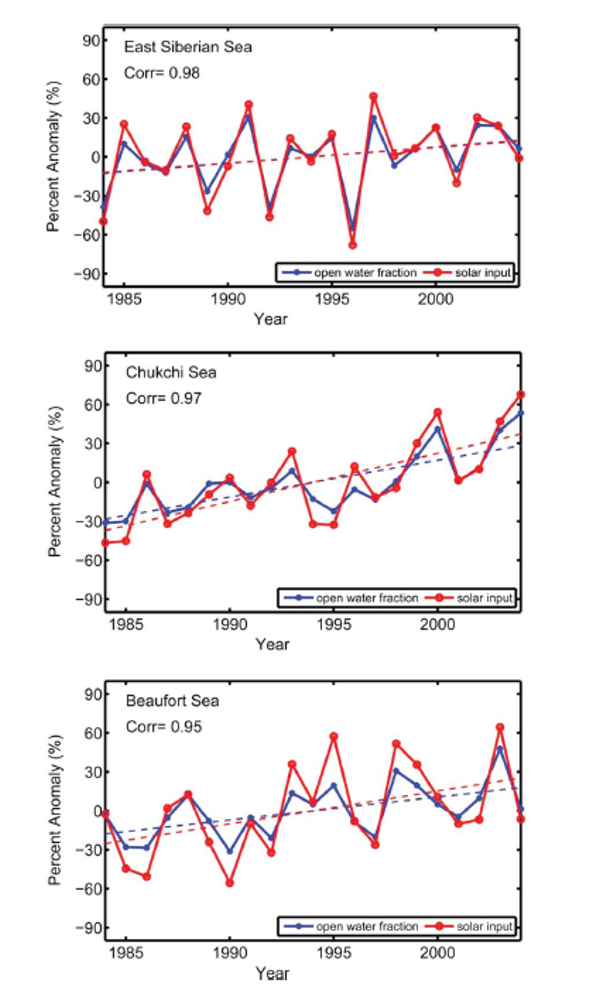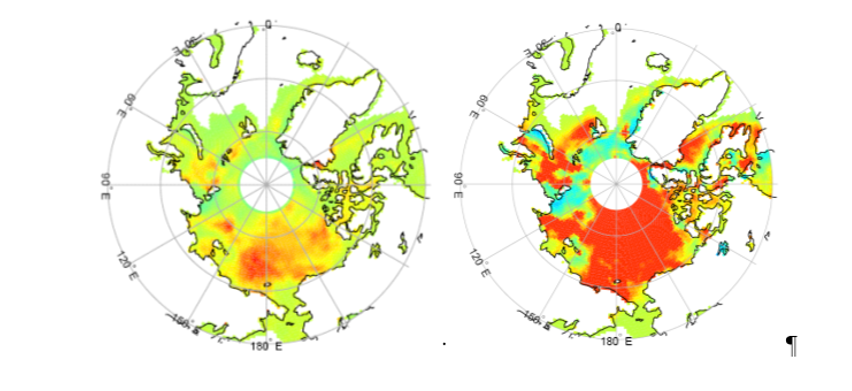
The Cryosphere encompasses various systems in the terrestrial environment where ice is present. This includes, glaciers, ice sheets, sea ice, and seasonal snow cover.
Department explores mass changes in the world's large ice sheets, Antarctic and Greenland. Additionally we monitor changes in polar sea ice, and study interactions between ice, oceans, and the atmosphere.
Description
Mass loss from the Greenland and Antarctic ice sheets have tripled over the last two decades and constitutes about one-quarter of the observed global sea-level rise since during this time frame. Much of that contribution is largely due to substantial mass loss from the Greenland Ice Sheet. Mass contributions from the large ice sheets according to the Intergovernmental Panel on Climate Change (4th Assessment Report) identifies the largest uncertainty to future sea-level projections in a warmer climate due to a lack of understanding in the dynamic response of ice sheets to a warmer climate.
Faculty and researchers in the Department of Atmospheric and Oceanic Sciences seek to understand ice sheet dynamics, feedbacks and the mechanisms governing change and variability within coupled ice, ocean, atmosphere systems.

Anomaly in open water fraction (blue solid line), annual solar heat input (red solid line), and the corresponding linear trends (dash lines), for period of 1984–2004, for the regions centered at: (top) East Siberian Sea (75.75o N, 134.75o E); (middle) Chukchi Sea (75.75o N, 179.75o W); (bottom) Beaufort Sea (75.75o N, 139.75o W).Citation: Pinker, R. T., X. Niu, and Y. Ma (2014),Solar heating of the Arctic Ocean in the context of ice-albedo feedback
Percent anomaly (%) in annual cumulative solar heat input into the Arctic Ocean for 2007 compared with the 21-year (1984-2004) mean as derived from MODIS observations. Citation: Xiaolei Niu and Rachel T. Pinker, 2020. Improved Estimate of Heat Storage in the Arctic During 2007.
Research Areas
- Supra-sub glacial hydrology and ice dynamics (Zwally, Walker)

- Ice sheet modeling (Nowicki, Walker)
- Polar sea ice variability and dynamics (Farrell, Carton, Markus)
- Ice-ocean interactions (Carton, Walker, Farrell)
- Polar remote sensing (Zwally, Markus)
- Polar regions radiation balance (Pinker)
Collaborators
- Sophie Nowicki (NASA Goddard)
- Lauren Andrews (NASA Goddard)
- Joe McGregor
- Ryan Walker (NASA Goddard)
- Thorsten Markus (NASA Goddard)
- Kelly Brunt (NASA Goddard)
- Kirsten Poinar (NASA Goddard)
Advising
Advising Faculty
- Carton
- Farrell
Non-Advising Faculty
- Pinker










